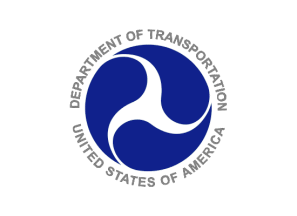Since President Biden took office, the Biden-Harris Administration has taken key steps to improve the safety of our railways by deploying funding from the President’s Bipartisan Infrastructure Law, holding railroads accountable, raising rail safety standards, and supporting first responders and rail workers. Following the Norfolk Southern derailment last year, the Administration has mobilized a comprehensive, cross-agency effort to support the people of East Palestine, Ohio. And, while the President has been pushing to increase rail safety, House Republicans have actively worked against this progress by voting to cut rail safety measures.
For nearly two centuries, railroads have been an indispensable part of America’s economy, society, and way of life. They are a vital component of our supply chains and get goods and people where they need to go. But no transportation system can succeed, long-term, if it is not safe—safe for the workers who operate it, and for the communities that rely on it. Safety is USDOT’s top priority. That means ensuring each and every day that the freight rail industry lives up to its obligations to keep communities and workers safe. It means funding infrastructure projects to improve both the safety and the efficiency of our nation’s rail network. And it means working with Congress to advance regulation in areas that need it.
In the early 2010s, we saw a number of high-profile freight rail incidents across the U.S. and Canada, including one that left nearly 50 people dead. Those events led to the passage of significant new rail safety rules—over strong opposition from industry. Since those changes, we have seen real improvement: derailments decreased by 15% on main line tracks, and lives were certainly saved. A decade later, this progress has plateaued, with Class I freight railroad safety performance data showing that rates of derailments and preventable incidents continue to impact communities and workers in unacceptable ways.
But, as last year’s Norfolk Southern derailment in East Palestine demonstrated, we can and must do more. USDOT is using the full range of our authority, as well as the funding available to us from the Bipartisan Infrastructure Law, to improve rail safety, as detailed below. We have taken action to raise rail safety standards, hold railroads accountable, support first responders, and protect rail workers. But we cannot do this alone.
Almost one year after the Norfolk Southern derailment in East Palestine, with the community still in the middle of long-term recovery, Congress and the railroads have yet to take meaningful action to address rail safety. In fact, House Republicans have voted twice to pass legislation that would slash rail safety funding and cut track inspections. Achieving the highest level of rail safety requires active and continued partnership from Congress. And rail companies must also take urgent, dedicated action that includes not just complying with current standards, but decisively putting the long-term safety of workers and communities ahead of short-term opportunities to supercharge profits.
Deployment of Funding under the Bipartisan Infrastructure Law: In 2023, the Department deployed a historic level of infrastructure funds for programs including the Consolidated Rail Infrastructure and Safety Improvements (CRISI) program, the new Railroad Crossing Elimination (RCE) program, and Railroad Rehabilitation & Improvement Financing (RRIF) program to modernize and upgrade rail infrastructure, including track improvements, bridge replacements and rehabilitations, highway-rail grade crossing eliminations, at-grade rail crossings, upgrades on routes carrying hazardous materials, support for workforce development and training activities, and more. These federal investments address long-standing rail needs and support communities nationwide by moving people and goods safely, efficiently, reliably, and conveniently.
- Through the first ever Railroad Crossing Elimination Program, DOT awarded $570 million to 32 states to eliminate or improve more than 400 at-grade crossings—making our roads and railways safer, while also helping countless Americans save time on their commutes. Award information is available here: https://railroads.dot.gov/elibrary/railroad-crossing-elimination-rce-program-program-fy2022-selections.
- In September 2023, through the Consolidated Rail Infrastructure and Safety Improvements (CRISI) program, DOT made passenger and freight rail safer, more efficient, and more reliable, awarding $1.4 billion to 70 projects. https://railroads.dot.gov/elibrary/fy-2022-consolidated-rail-infrastructure-and-safety-improvement-program-selections-project.
- In November 2023, FRA announced $16.4 billion in grant awards under the Federal-State Partnership for Intercity Passenger Rail Program to support 25 passenger rail projects of national significance along the Northeast Corridor, the nation’s busiest passenger rail corridor. Information on these awards is available here: https://railroads.dot.gov/elibrary/fy22-23-FSP-NEC-fact-sheets.
- In December 2023, FRA announced $8.2 billion for grants for 10 passenger rail projects across the country to be awarded through the Federal-State Partnership for Intercity Passenger Rail Program – National. More details on the awards are available here: https://railroads.dot.gov/elibrary/fy22-23-FSP-National-rail-program-project-fact-sheets.
- Also in December 2023, FRA announced the selection of 69 proposed passenger rail corridors in 44 states through the Corridor Identification and Development Program, another Bipartisan Infrastructure Law mandate. More information is available here: https://railroads.dot.gov/elibrary/fy22-CID-program-selections.
Holding Railroads Accountable:
- Focused Inspection Programs: FRA initiated multiple inspection programs in 2023 and completed a focused review of tank cars transporting hazardous materials. FRA also completed the field work for its high hazard flammable train (HHFT) route assessment, a focused inspection and investigation program encompassing approximately 7,500 inspections to assess the condition of track and signal and train control infrastructure, equipment, and operating practices along HHFT routes and routes where large quantities of hazardous materials travel. This program in total inspected over 40,000 freight cars, 76,888 miles of track (87% were on routes over which hazardous materials are transported), and thousands of wayside detectors on over 25 different railroads. FRA is taking action based on these finding, and the inspections completed are prompting railroads to take corrective actions to increase safety. The results are available here.
- Safety Assessment of Norfolk Southern: FRA conducted a supplemental safety assessment of Norfolk Southern’s safety culture and safety practices. FRA is in the process of conducting comprehensive assessments of the safety culture, practices, and regulatory compliance of each Class I railroad. FRA also is assessing issues, trends, and commonalities across the multiple railroads reviewed.
- Rail Worker Confidential Close Call Reporting System: Secretary Buttigieg pressed them, and all Class I freight railroads agreed to participate in the Confidential Close Call Reporting System (C3RS) for rail employees to help identify and better prevent safety issues. FRA has held a series of meetings encouraging Class I freight railroad participation, Nearly a year after, Norfolk Southern just announced they would be joining a pilot program C3RS with some of their workers. No other Class I railroad has. FRA is still pressing the issue and expects the Class 1 railroads will make good on their commitment.
- DOT put Norfolk Southern on notice for needed safety reforms and called for an end to the rail industry’s “vigorous resistance” to increased safety measures, which in the past has included lobbying and litigation to kill commonsense rail safety reforms.
Raising Rail Safety Standards:
- Two-Crew rule: FRA is pushing forward the final rule that would address the potential safety impact of one-person train operations, including appropriate measures to mitigate an accident’s impact and severity. Specifically, this rulemaking would address the issue of minimum requirements for the size of train crews, depending on the type of operations. The proposal is available here.
- Certification of Signal and Dispatcher Employees: FRA is pushing forward rulemakings that would require railroads to develop written programs for certifying dispatchers and signal employees.
- Emergency Escape Breathing Apparatus NPRM: FRA issued a Supplemental Notice of Proposed Rulemaking that would require railroads to provide emergency escape breathing apparatus to train crews and other employees when transporting certain hazardous materials.
- Calling for rail industry and Congress to step up. DOT is pressing for passage of the Bipartisan Railway Safety Act, which would phase in newer, safer tank cars, increase fines against railroads for safety violations, require defect detectors, expand the list of hazardous materials that qualify for strict safety precautions, and more.
- Advisory on Long Trains: FRA issued a Safety Advisory to increase awareness of the potential complexities associated with operating longer trains and urged railroads to address them to ensure safety. The advisory also highlights several safety risks relating to blocked crossings, notably the impacts blocked rail crossings can have on first responders as they work to address emergencies and reach people in need.
- Advisory on Train Makeup: FRA issued a Safety Advisory calling on freight railroads to prioritize proper train makeup and provided recommendations to improve train safety and reduce the risk of future accidents. The advisory makes clear that railroads need to take proactive measures to ensure the configuration of railcars and the loading of cargo is performed safely and railroad workers are supported and trained fully to ensure safety. The configuration of railcars and how cargo gets loaded can be critical to the risk of derailment.
- Advisory for Tank Car Covers: USDOT’s Pipeline and Hazardous Materials Safety Administration (PHMSA) acted on initial findings from the NTSB investigation into the Norfolk Southern derailment in East Palestine, and issued a Safety Advisory for tank car covers.
- Advisory on Tank Car Type: PHMSA released a Safety Advisory pressing rail tank car owners and hazmat shippers of flammable liquids to remove their DOT-111 and CPC-1232 tank cars and replace them with DOT-117 tank cars. The incident in East Palestine, OH, demonstrated that DOT-111 and CPC-1232 tank cars do not perform at the highest level of survivability during derailments and fires, unlike the DOT-117 tank cars.
- Advisory for Hot Bearing Detectors: FRA urged railroads using hot bearing detectors (HBDs) to evaluate their inspection process, prioritize the proper training and qualification of personnel working with HBDs, and improve the safety culture of their organizations related to HBDs decision-making. The full advisory can be found here.
- Safety Advisory on Roadway Maintenance Machines: FRA issued a Safety Advisory to emphasize the importance of rules and procedures regarding the safety of roadway workers who operate or work near roadway maintenance machines. The advisory recommends reviewing and updating rules regarding the safety of roadway workers who operate or work near these machines.
- Safety Bulletin on Hand-Operated Main Track Switches: FRA issued a Safety Bulletin to emphasize the importance of ensuring safe operations of hand-operated main track switches. FRA is investigating an April 16 train collision and derailment involving a misaligned switch that resulted in serious injuries to crew members.
- Safety Bulletin on Car Switching Hazards: FRA issued a Safety Bulletin to increase awareness of the hazards relating to switching cars. FRA is investigating a recent switching accident that resulted in a crewmember leg amputation.
Supporting First Responders and Rail Workers:
- Sick leave: Since the Administration has pressed railroads to provide paid sick leave for railroad workers, more than 88 percent of railroad workers now have paid sick leave.
- Funding Hazmat Rail First Responders: In September 2023, PHMSA announced more than $30 million to support firefighters, and local hazardous materials safety planning and response efforts. These grants help train first responders, strengthen safety programs, improve general safety, reduce environmental impacts, and educate the public on local safety initiatives. In recent years thousands of responders nationwide have received training thanks to this program, including 2,500+ responders in 137 different locations in Ohio.
- Advanced Notifications: Recently, (PHMSA) proposed a new rule to require railroads to always maintain — and update in real-time — accurate, electronic information about rail hazmat shipments in a train consist that would be accessible to authorized emergency response personnel. Railroads would also be required to proactively “push” that information to authorized local first response personnel as soon as the railroad is aware of an accident involving any hazardous materials.
- Opening an expanded HAZMAT training facility: This week, PHMSA is holding a ribbon cutting to expand its National Training and Qualifications Branch (NTQB) facility. This expansion will allow PHMSA to train more first responders than ever before — increasing throughput by 150%. Since 2013, this national training facility has trained thousands of pipeline and hazardous materials transport investigators, inspectors, and staff, as well as other hazardous materials safety professionals, and first responders from around the United States and around the world.
- Advisory for Emergency Response Plans: PHMSA urged all railroad operators to create and maintain emergency response plans for the transport of hazardous materials, strengthen the accessibility of the AskRail system that provides real-time information on shipments to first responders, and inform PHMSA when they identify responders who are not able to access PHMSA’s grant-funded training. The full advisory can be found here.
- Advisory for 9-1-1 call centers: PHMSA encouraged 9-1-1 call centers to use technologies such as the AskRail application that provide critical information to first responders regarding rail incidents. The advisory is available here.
While the Biden-Harris Administration has been taking meaningful action to improve rail safety, House Republicans have been voting to cut rail safety:
- In April 2023, House Republicans passed legislation that would cut discretionary spending by 22%, which would lead to nearly 7,500 fewer rail safety inspection days and over 30,000 fewer miles of track inspected annually—enough track to cross the United States nearly 10 times. By contrast President Biden’s FY2024 Budget called for an investment of more than $1 billion to expand USDOT’s core rail safety efforts and improve critical infrastructure.
- In September 2023, House Republicans supported a CR that would have slashed rail safety and led to 10,000 fewer rail safety inspection days next year, and nearly 44,000 fewer miles of track inspected annually.
Official news published at https://www.transportation.gov/briefing-room/factsheet-rail-safety



